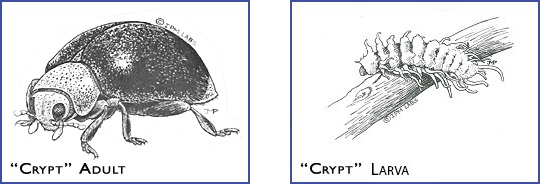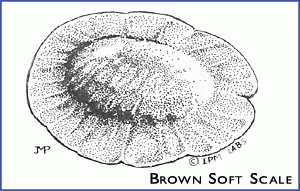Fungus Gnats and Shore Flies in Bedding Plants
Predatory Mite for Control of Fungus Gnats and Shoreflies: Hypoaspis miles
Fungus Gnats: Apply one liter of Hypoaspis miles per 1000 square feet at the beginning of the crop. This predatory mite is a scavenger that will survive in the absence of fungus gnats, but consume the larvae as they appear. It also eats western flower thrips. It is not good for knocking down a fungus gnat outbreak.
Shoreflies: Hypoaspis can exert control on shoreflies similar to that with fungus gnats provided that there is no standing water. Shorefly larvae can survive under standing water, whereas Hypoaspis can not.
ScanMask™ for Control of Fungus Gnats
A single application of ScanMask™ beneficial nematodes is sufficient for preventing fungus gnat outbreaks or in the beginning phase of an outbreak. The nematodes do not attack shoreflies. They kill only fungus gnat larvae. Adult fungus gnats will linger for several weeks after treatment as they gradually age and die off. The application should be repeated once if the first treatment was not effective. The best strategy to detect effectiveness is to count fungus gnat larvae in potato slices (see below). Larval numbers should decline rapidly over the week after treatment. Adult numbers will decline over a period of three weeks and are easily monitored on yellow sticky cards.
Acknowledgements: Information in this program is based on writings of and personal communications with Albert Pye, Mary Harris, Richard Lindquist, John Sanderson, James Matteoni, Don Elliot, Gerard Ferrentino, Bastian Drees,and Margery Daugherty. IPM Laboratories, Inc. gratefully acknowledges their work in IPM and biological control.IPM Laboratories, Inc. warrants that the biological controls you receive will be alive and healthy when received and will contain the correct number of the species you ordered. However, as with any pest control measure, success cannot be guaranteed.
IPM Laboratories, Inc. warrants that the biological controls you receive will be alive and healthy when received and will contain the correct number of the species you ordered. However, as with any pest control measure, success cannot be guaranteed. IPM Laboratories, Inc. makes no guarantee, express or implied, as to the effectiveness of these products.
All images are copyrighted to IPM Laboratories, Inc. and may not be copied or reproduced without permission.









